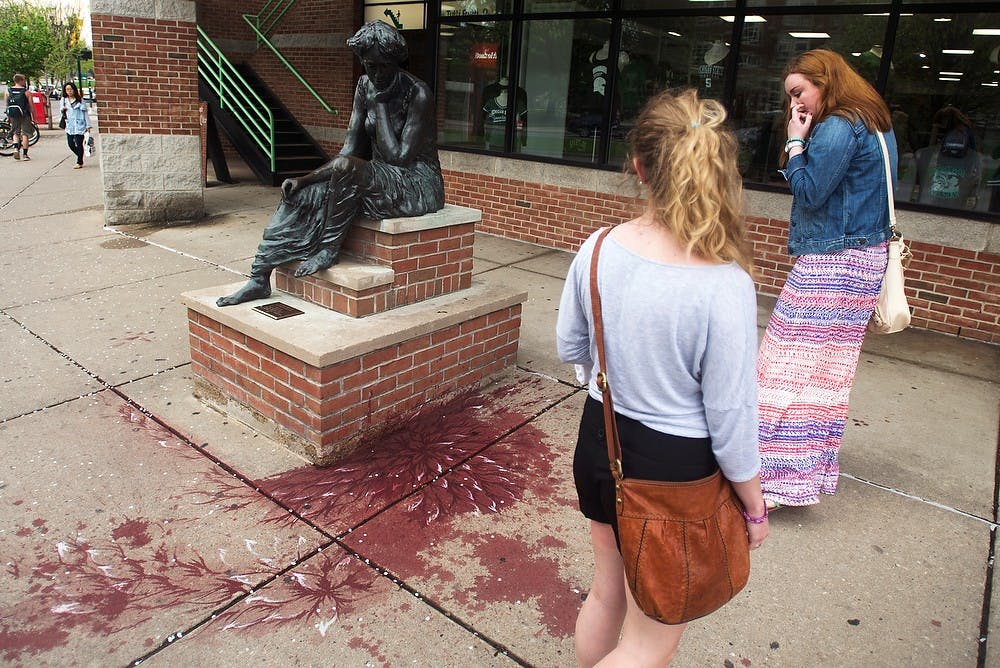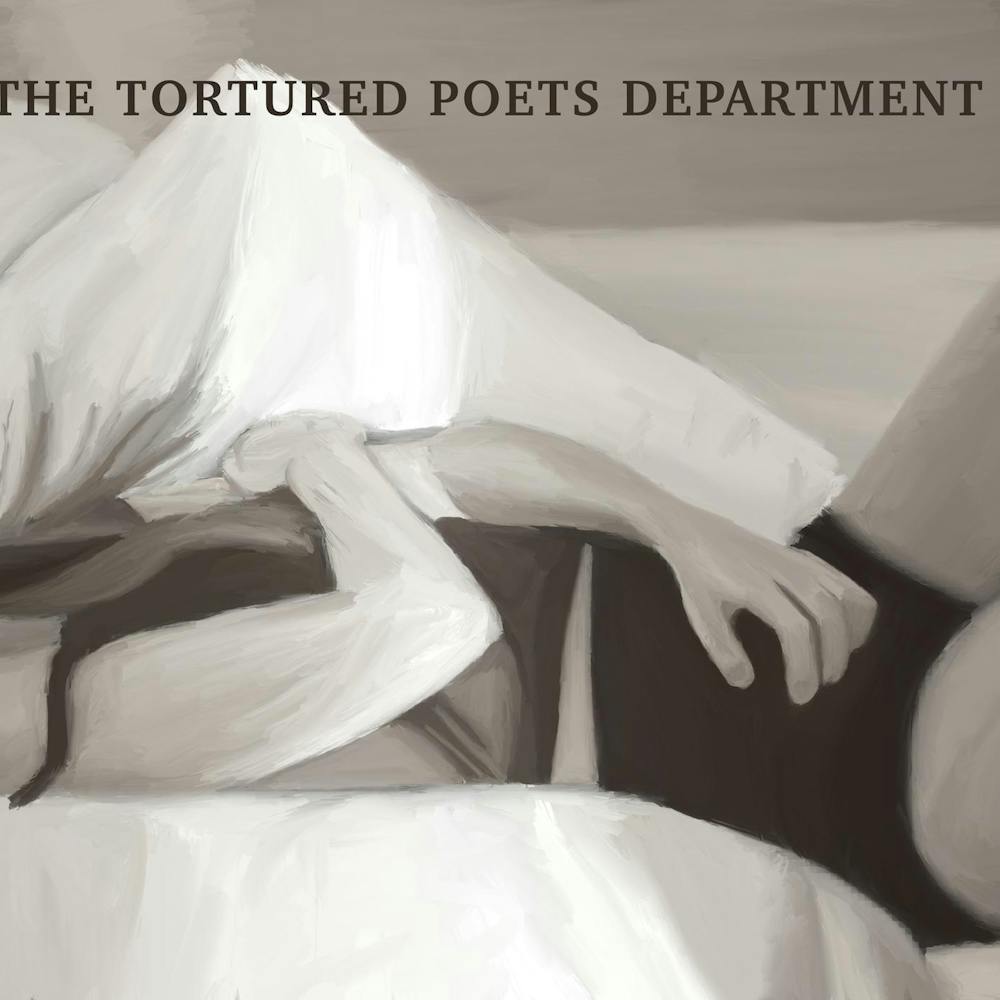From afar, the crimson red floral markings along the streets of East Lansing could be mistaken for expansive splatters of blood.
But April 30 did not mark the beginning of a series of gory events. Rather, it marked the beginning of several public art installations.
Pakistani artist Imran Qureshi initiated East Lansing's new urban mural project "Crack Art" with his installation entitled "Fragmented," according to a statement from the city.
Qureshi utilized public spaces beginning in East Lansing's Ann Street Plaza and leading up to the Broad Art Museum for his murals. The goal was to connect the public display "Fragmented," to his exhibition in the museum, "The God of Small Things."
"It has been phenomenal to see how artists respond to the space within the museum as they approach their exhibition," Broad Art Museum director and curator Alison Gass said in a statement. "By partnering with the City of East Lansing, we now have the opportunity to extend the artist's practice beyond the walls of the museum and into a downtown public space."
"The God of Small Things" opened on Friday, May 9 and will be featured through Sunday, August 17. The display forms a mountain of crumpled paper from printed images of Qureshi's previous works, the press release said.
Assistant curator for the Broad Art Museum Jenny Carty said that the Broad has looked forward to bringing Qureshi to East Lansing for a couple years.
"Qureshi really rose to international acclaim in 2011. He became a very prominent artist, very prolific," she said.
Carty said that "The God of Small Things" is Qureshi's first indoor display in America. She said that bringing an artist who has showcased work in many world capitals to a smaller town shows the museum's mission to attract international artists to share their love and appreciation for art.
The museum would not disclose the cost of the commission, citing "respect for the artists." However, Carty said that in Qureshi's case, costs involved the construction of the crumpled-paper mountain in the Broad as well as the murals found throughout East Lansing.
In his previous installations, Qureshi typically used a lot of blue paint, Carty said. According to Carty, Qureshi mentioned that terrorist bombings at a marketplace in Lahore, Pakistan — Qureshi's hometown — inspired his transition to blood-red paint.
She said that Qureshi's use of red paint is meant to have a more global resonance about violence — it is not intended to specifically relate to the tragedy he experienced in Pakistan.
Kurt Dewhurst , former member of East Lansing's public art commission and current member of MSU's Public Art on Campus Committee, said the works can serve as a catalyst for the discussion of important issues.
"It's important for our community to be able to invite artists who are dealing with social and political hostilities and invite the community to think about those issues and engage in those issues," he said. "The piece itself is designed to start conversations and foster conversations and dialogue."
Support student media!
Please consider donating to The State News and help fund the future of journalism.
Discussion
Share and discuss “East Lansing sidewalks run red with Pakistani artist's installations” on social media.







